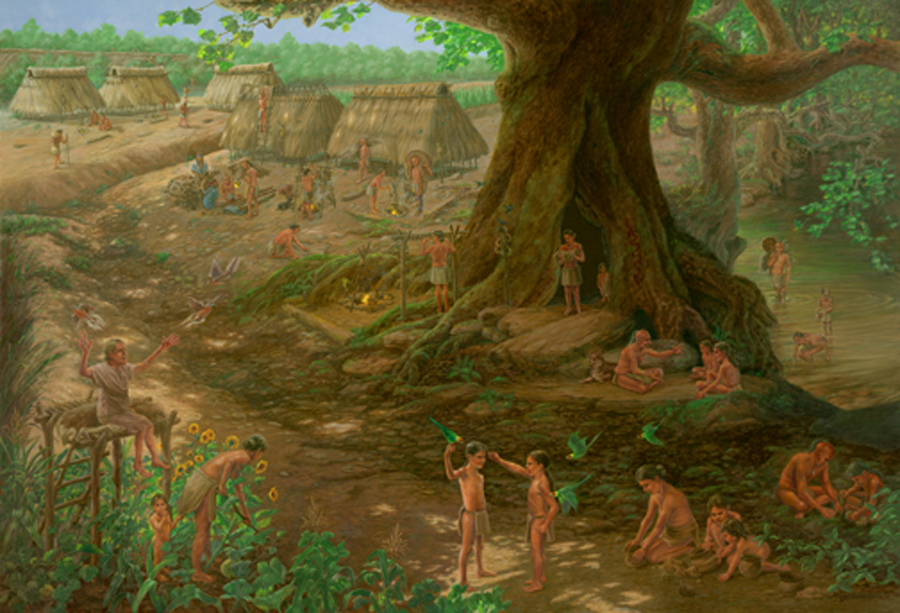Village of Mariemont – 17th Century
Read More...
The Village depicted in this painting dates from approximately 1610-
Miami Bluff is the location of a serpentine earthwork. Indian women are shown carrying baskets of sand to the bluff top to construct the earthwork. It’s believed it was built to both channel water to their gardens and serve as an important symbolic (i.e., clan) landmark. Today, much of the almost 3,000 foot long earthwork still exists today.
There were many massive “old growth” trees that grew undisturbed for centuries. Sycamore trees are known ethno historically to have provided convenient shelters. The Carolina parakeet, the only parakeet native to North America, thrived in abundance prior to European colonization. They were tame and likely were enjoyed by the Indians. Traditionally, older women kept crows, passenger pigeons and other wildlife from the garden.
Because of the historic time period, this painting depicts the presence of French traders. At this time period, the exchange between Europeans and American Indians was friendly.
33 x 48 Oil

